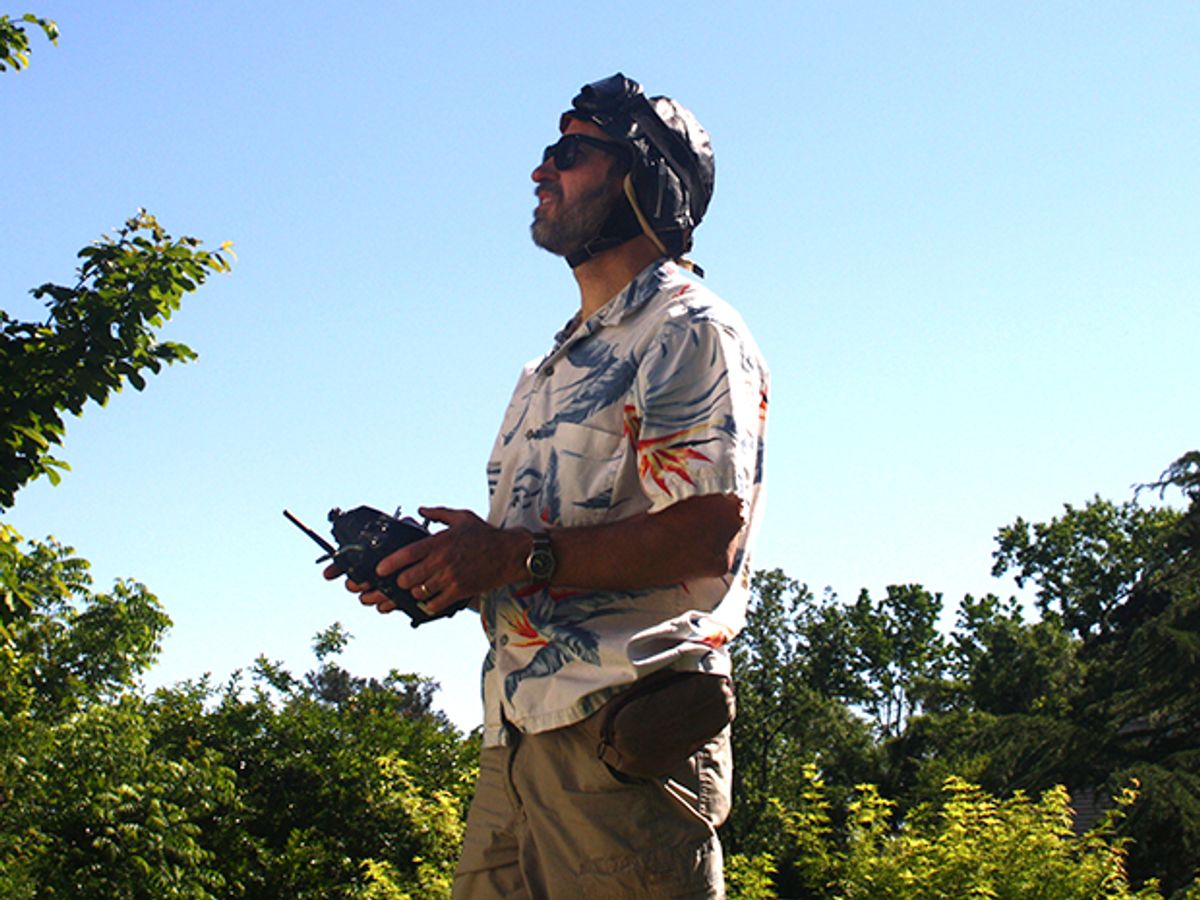
Since 29 August 2016, the U.S. Federal Aviation Administration (FAA) has made it possible for people to fly small drones for commercial purposes, so long as they adhere to some generally reasonable rules described by Part 107 of Title 14 of the Code of Federal Regulations, better known as the small UAS (unmanned aircraft systems) rule. The key point of the new regs is that you have to become a qualified “remote pilot”—and get an official certificate to prove it.
I don’t want to fly drones commercially, but I have enjoyed flying radio-controlled models using first-person view, or FPV, in which you fly by watching live video from a camera mounted on the drone, sometimes via virtual reality goggles. The FAA ostensibly forbade FPV drone flight in 2014 when it published its interpretation [PDF] of what constitutes a model aircraft. The FAA contended that pilots have to be able to see the aircraft directly with their own eyes from the ground. Many modelers ignore that prohibition, a practice that the Academy of Model Aeronautics endorses. But I’m a play-it-by-the-rules sort of guy, so I put the hobby into mothballs. With the new regulations, though, I decided to get certificated as a bona fide remote pilot and dust off my FPV gear. After all, how hard could it be?
Having just earned my drone wings, I can now answer that question in some detail.
First off, it costs money: US $150, which pays for a proctored multiple-choice exam at an FAA-approved testing center. I used freely available study materials, starting with 3D Robotics’ helpful guide. But some people might find boning up for the exam less painful by taking an online course, which can be had for about $150 on up. You’ll also have to pass a Transportation Security Administration background check and fill out some online paperwork.
What sort of things does the FAA want to confirm that you know? Not, as it turns out, a lot of the technical nitty-gritty of operating a drone. Instead, the test focuses on things of greater significance to “real” pilots, like an understanding of different classes of air space and how to decipher the telegraphic weather reports for aviators.
There is also a slew of details to memorize about the FAA’s regulations. Question: What special requirements come into play if you operate a drone during civil twilight? Answer: You need to use anticollision lights. Question: What do you do if you have to deviate from the rules in the interest of safety? Answer: Inform the FAA if the FAA requests it. (Figuring out why the FAA would ever ask to be informed about something it has no knowledge of remains an exercise for the student.) Question: How long do you have after permanently changing your mailing address to inform the FAA? Answer: 30 days.
I suspect that folks at the FAA constructed their remote-pilot exam with two thoughts in mind. First, they want to ensure that remote pilots are serious enough about earning the privilege to put in at the very least a solid weekend, if not a week or more, of study. Second, and more important, the FAA probably wants to instill into the newly certified the sense of joining the ranks of bona fide aviators and so make them more willing to embrace the norms of that community. Navigating things around the sky is a tradition that goes back more than a century, with its own culture, complete with quirky terms, acronyms, codes, concepts, and—above all—a shared commitment to be part of a complex, cooperative enterprise designed to keep everybody safe.
So I’m inclined to excuse the FAA for forcing me to memorize what each letter stands for in IMSAFE, PAVE [PDF], CTAF [PDF], AWOS, and TAF. I managed to do that without too much grief and scored a respectable 93 percent on the exam. (It takes only 70 percent to pass.) And who knows, one day the information might prove useful should I ever find myself on the TV game show “Jeopardy!”: “I’ll take Aviation Terms for $200, Alex!”
This article appears in the June 2017 print issue as “Earning Your Drone Wings.”
